How to Formulate Your Strategy of Digital Marketing?
BUSINESS TIPS
River Chan
7/4/202413 min read

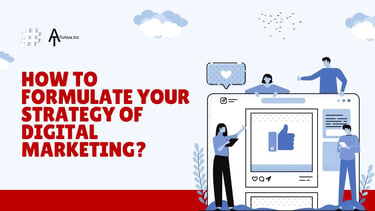
In today's rapidly evolving business landscape, digital marketing has become an indispensable tool for companies seeking to thrive and remain competitive.
As we navigate an increasingly connected world, the importance of digital marketing cannot be overstated.
It has revolutionized the way businesses interact with their target audience, offering unprecedented opportunities for growth, engagement, and brand building.
Summary: Key Takeaways for Digital Marketing Strategy in this Era
In the rapidly evolving world of digital marketing, success hinges on adaptability and continuous learning.
Embracing a test-and-learn approach is crucial for staying ahead in this dynamic landscape.
This methodology encourages marketers to experiment constantly with new strategies and tactics, analyze data rigorously to inform decision-making, pivot quickly based on performance metrics, and view failures as valuable learning opportunities.
Adapting to the evolving digital landscape requires marketers to stay informed about emerging trends and technologies, remain open to adopting new tools and platforms, focus on creating seamless, personalized customer experiences, and invest in ongoing skill development for their teams.
This commitment to flexibility and innovation is essential for navigating the ever-changing digital ecosystem.
At ToAsia.biz, we understand that navigating the Asia Pacific digital market presents unique challenges and opportunities.
Our approach combines local expertise with a focus on sustainable growth, helping businesses develop tailored business plans and strategies for diverse Asian markets, navigate region-specific platforms and regulations, and identify and capitalize on emerging trends.
By embracing a test-and-learn mindset and staying agile in the face of change, businesses can turn the complexities of the digital landscape into opportunities for business growth.
We as your partner, you'll be well-equipped to adapt, innovate, and thrive in the dynamic digital ecosystem of the Asia Pacific region.
Our commitment to helping you expand at the right pace while maintaining lean operations and profitability sets us apart, ensuring that your digital marketing efforts not only reach new heights but also contribute to sustainable, long-term success in this vibrant and opportunity-rich market.
Talk to us today and discover how our approach sets us apart from other business consultants.

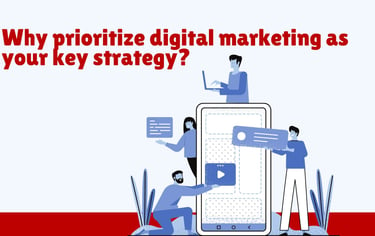
Why Prioritize Digital Marketing as Your Key Strategy?
Digital marketing has emerged as a priority for businesses of all sizes, outpacing traditional marketing forms in many aspects.
While traditional marketing methods like outdoor advertising, television commercials, and print media still have their place, digital marketing offers distinct advantages that make it particularly appealing in our modern, technology-driven society.
One of the primary reasons to prioritize digital marketing is its unparalleled reach and targeting capabilities.
Unlike traditional marketing, which often casts a wide net hoping to catch the attention of potential customers, digital marketing allows businesses to focus their efforts on reaching the right audience at the right time.
Companies can tailor their messages to specific demographics, interests, and behaviors through sophisticated targeting options available on various digital platforms, ensuring that their marketing resources are used efficiently and effectively.
Moreover, digital marketing is generally more cost-effective compared to traditional marketing channels.
This is especially beneficial for small and medium-sized businesses operating with limited budgets.
Online advertising, search engine optimization (SEO), content marketing, and email campaigns often provide a higher return on investment, allowing businesses to achieve remarkable results without breaking the bank.
Significant changes in audience behavior and preferences also drive the shift towards digital marketing.
Today's consumers, particularly younger generations, increasingly focus on co-creation and brand-to-audience interaction to build resonance.
They seek more than just advertising taglines; they want to engage with brands that align with their values and offer meaningful experiences.
Digital marketing facilitates this two-way communication, allowing brands to create talking points that resonate not just from brand to audience but also encourage audience-to-audience discussions.
Furthermore, there has been a notable shift in media consumption patterns. We've moved from a "what you feed" to a "what I choose" model, where consumers have more control over the content they consume.
Potential customers now visit various websites, forums, social media platforms, and review sites to gather information about products and brands before making purchasing decisions.
This behavior change necessitates a strong digital presence for businesses to remain visible and relevant in the customer's journey.
The digital landscape has also given rise to the phenomenon of audience fragmentation.
This refers to the distribution of audiences across various media offerings, making it challenging to reach a broad audience through a single channel.
As a result, businesses must adopt an omnichannel approach, connecting with potential customers through multiple touchpoints along their purchasing journey.
This strategy requires a deep understanding of the target audience's preferences and behaviors to effectively allocate resources across different digital platforms.
In response to these trends, businesses are increasingly focusing on providing immersive customer experiences that blur the lines between physical and digital touchpoints.
By combining the advantages of offline interactions, such as multisensory experiences and human-to-human engagement, with the benefits of online experiences, including personalized interactions at scale, companies can create truly engaging customer journeys.
As we look to the future, the importance of digital marketing is only set to grow.
Predicted changes in consumer behavior, driven by rapid technological advancements in areas such as artificial intelligence and augmented reality, will continue to shape the digital marketing landscape.
Marketers must stay agile, continuously adapting their strategies to meet evolving consumer expectations and leveraging new technologies to create more personalized and engaging experiences.


Key Components of Digital Marketing
The key components of digital marketing have evolved to accommodate changing consumer behaviors and technological advancements.
Let's explore these components in detail:
Email Marketing
Email marketing remains a powerful tool, particularly for mid to bottom-funnel marketing efforts.
It's especially effective once you've gathered more details about potential customers.
According to Statista, the number of global email users is expected to reach 4.6 billion by 2025, highlighting its continued relevance.
Successful email marketing campaigns rely on several critical elements:
Email verification to maintain a clean and engaged subscriber list
Personalization to tailor content to individual recipients
A/B testing to optimize various elements like subject lines and content
Segmentation to target specific audience groups
Clear and compelling calls-to-action (CTAs)
Mobile-friendly design for easy reading on smartphones and tablets
Email marketing allows for direct communication with prospects and customers, making it ideal for nurturing leads, promoting products or services, and building long-term relationships.
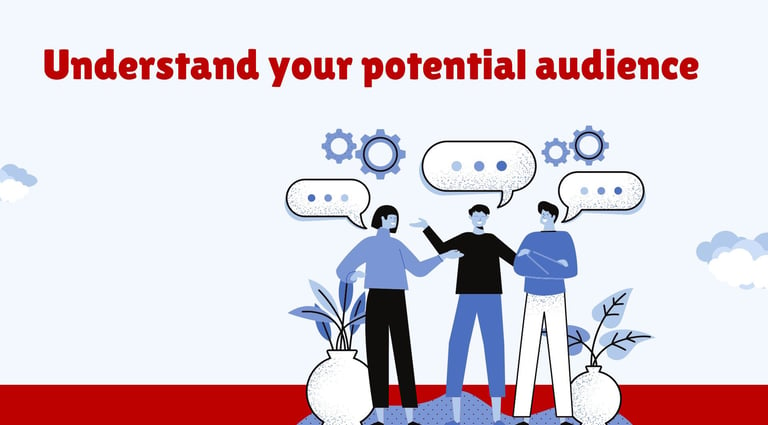

Understanding Your Potential Audience is Crucial for Setting Up a Digital Marketing Strategy
Understanding your potential audience is a critical component of formulating an effective digital marketing strategy.
In today's fragmented media landscape, businesses face the challenge of reaching and engaging their target audience across multiple platforms and channels.
This fragmentation has led to the need for a more nuanced and adaptive approach to marketing.
Audience fragmentation refers to the distribution of audiences across various media offerings.
As consumers have access to an ever-expanding array of content platforms and channels, their attention is increasingly divided.
This phenomenon makes it challenging for businesses to rely on a single media channel to reach their entire target audience effectively.
According to research, the average user now bounces between seven social media platforms in a month, highlighting the dispersed nature of modern media consumption.
The implications of audience fragmentation are significant for marketers.
It's no longer sufficient to focus on traditional demographic segmentation alone. Instead, businesses must dig deeper to understand the behaviors, interests, and preferences of their target audience across different platforms.
This requires a more sophisticated approach to data analysis and audience targeting.
To address the challenges posed by audience fragmentation, an omnichannel approach has become essential.
Omnichannel marketing involves creating a seamless and consistent experience for customers across all touchpoints, whether online or offline.
This strategy recognizes that customers interact with brands through multiple channels and devices throughout their purchasing journey.
Implementing an effective omnichannel strategy requires businesses to connect with their potential audience through various touchpoints.
This approach allows for a more comprehensive understanding of the customer's journey and enables marketers to deliver personalized experiences at each stage.
For instance, a customer might first encounter a brand through a social media ad, then visit the company's website, and finally purchase in a physical store.
An omnichannel approach ensures that the customer's experience is consistent and seamless across all these interactions.
However, budget constraints often necessitate careful consideration of which touchpoints are most effective for reaching the target audience.
Marketers must allocate resources strategically, focusing on the channels and platforms that yield the best results for their specific audience.
This requires a deep understanding of where the target audience spends their time online and how they prefer to interact with brands.
Adapting to different platforms and demographics is crucial in this fragmented landscape.
For example, if the target audience is predominantly young, traditional platforms like Facebook may no longer be the most effective channel.
Instead, newer platforms such as TikTok or Instagram's Threads might be more appropriate for reaching and engaging this demographic.
Similarly, instant messaging apps like WhatsApp might be more effective than email for certain audience segments.
It's also important to consider geographical and cultural differences especially in Asia when adapting to various platforms.
Different countries and regions may have preferences for specific social media platforms or communication channels.
For instance, Kakao Talk is widely used in South Korea, while LINE is popular in Japan.
Understanding these nuances is crucial for businesses looking to expand their reach globally.
By embracing an omnichannel approach and adapting to the fragmented media landscape, businesses can create more effective and engaging marketing strategies.
This approach not only helps in reaching a wider audience but also in building stronger, more meaningful relationships with customers across various platforms and demographics.
In conclusion, understanding and adapting to audience fragmentation is no longer optional for businesses aiming to succeed in the digital age.
By leveraging data, embracing omnichannel strategies, and remaining flexible in their approach, companies can navigate the complexities of modern media consumption and connect with their audience more effectively than ever before.

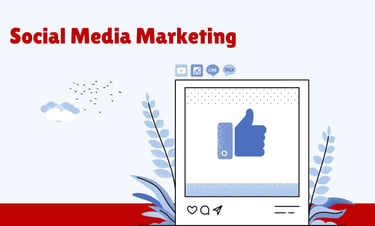
Social Media Marketing
Social media marketing typically serves as a top-of-funnel strategy, excellent for building brand awareness and engaging with audiences.
Platforms like YouTube are particularly effective for mass awareness through brand videos, while others like Facebook, Instagram, TikTok, Threads, X (formerly Twitter), LINE and Kakao allow for more interactive brand experiences.
Each platform offers unique opportunities:
YouTube: Ideal for long-form video content, tutorials, and brand storytelling
Instagram: Visual-centric platform perfect for lifestyle and product showcases
TikTok, YouTube Shorts, Instagram Reels: Short-form video content that appeals to younger demographics
Facebook, LINE, Kakao, WeChat: Versatile platforms for various content types and targeted advertising
X, Instagram Threads: Short copywriting content, real-time engagement and trending conversations
Social media marketing enables brands to create a community around their products or services, facilitate user-generated content, and provide customer support.
It's crucial to tailor content to each platform's strengths and audience preferences.
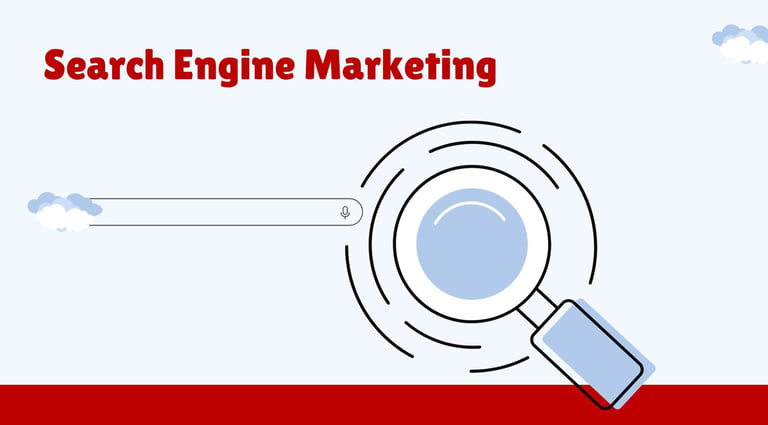

Search Engine Marketing (SEM and SEO)
While there's a trend of younger generations using social media platforms like Instagram for information searches, traditional search engines still play a crucial role.
Search Engine Marketing encompasses both Search Engine Optimization (SEO) and Search Engine Advertising (SEA).
SEO focuses on improving a website's organic visibility in search results through:
On-page optimization (content quality, keywords, meta tags)
Technical SEO (site speed, mobile-friendliness, structured data)
Off-page SEO (link building, social signals)
SEA, on the other hand, involves paid advertising on search engines, primarily through pay-per-click (PPC) campaigns.
This allows businesses to appear at the top of search results for specific keywords.
It's important to note that while Google dominates the search market in many countries, other search engines like Yahoo, Baidu (China), and Naver (South Korea) are significant in certain regions.
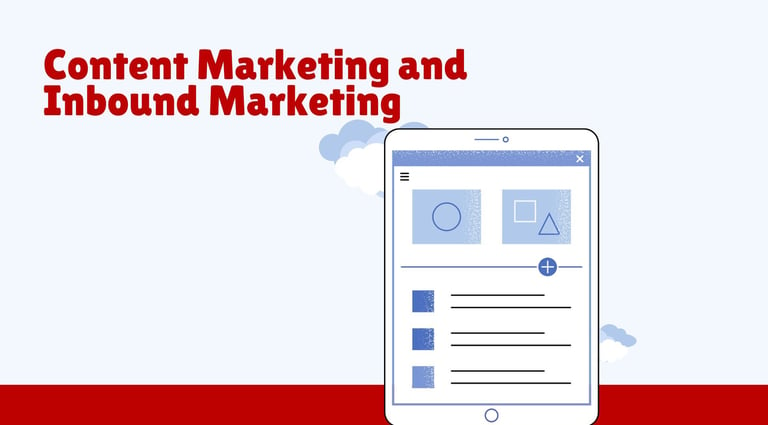

Content Marketing and Inbound Marketing
Content marketing and inbound marketing are closely related strategies that focus on creating and distributing valuable, relevant content to attract and retain a clearly defined audience.
This approach aims to pull potential customers into the sales funnel rather than pushing messages out.
Key elements include:
Blogs and articles
Whitepapers and ebooks
Webinars and online courses
Infographics and visual content
Podcasts and video series
The goal is to provide information that addresses the audience's pain points and questions, establishing the brand as a trusted authority in its field.
This strategy aligns well with the changing consumer preference for brands that offer value beyond just their products or services.
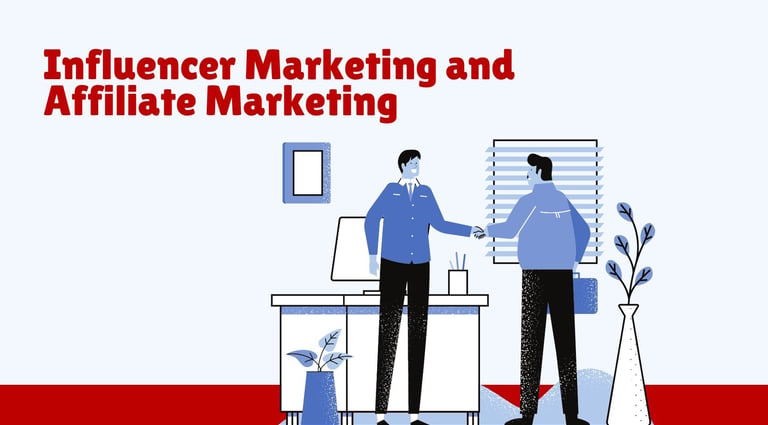

Influencer Marketing and Affiliate Marketing
Influencer marketing leverages the popularity and trust of individuals with a significant following on social media or other platforms. These influencers create content that aligns with their expertise and audience interests while promoting a brand's products or services.
Affiliate marketing, often used in conjunction with influencer marketing, involves partnering with individuals or companies who promote your products in exchange for a commission on sales generated through their efforts.
Both strategies can be powerful for:
Expanding reach to new audiences
Building trust through third-party endorsements
Generating leads and driving traffic to websites or landing pages
Creating authentic content that resonates with specific audience segments
When implementing these strategies, it's crucial to choose influencers and affiliates whose values align with your brand and whose audience matches your target demographic.
A comprehensive digital marketing strategy should incorporate a mix of these components, tailored to the specific needs and goals of the business.
As the digital landscape continues to evolve, marketers must stay agile, continuously adapting their approaches to meet changing consumer behaviors and technological advancements.
The key is to create a cohesive strategy that leverages the strengths of each component while maintaining a consistent brand message across all channels.

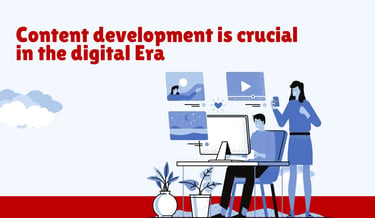
Content Development is crucial in the Digital Marketing Strategy of the Digital Era
Content development in the digital age has undergone a significant transformation, presenting both challenges and opportunities for marketers.
The advent of AI has revolutionized the content creation landscape, but it has also introduced new complexities that marketers must navigate to stand out in an increasingly crowded digital space.
Challenges of Information Overload
In today's digital ecosystem, we are facing an unprecedented deluge of information.
The ease with which content can be created and distributed, especially with AI tools, has led to a state of information overload.
According to a report by Domo, over 2.5 quintillion bytes of data are created every single day, and this number is only increasing.
This abundance of content makes it increasingly difficult for brands to cut through the noise and reach their target audience effectively.
The challenge is not just the volume of information but also its quality and relevance.
With AI-generated content becoming more prevalent, there's a risk of homogenization, where much of the content lacks originality and fails to provide genuine value to the audience.
This saturation can lead to audience fatigue and decreased engagement, making it harder for marketers to achieve their goals.

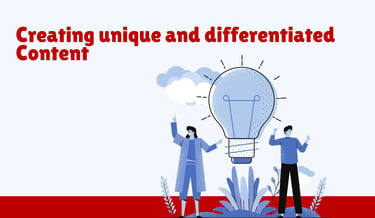
Creating Unique and Differentiated Content is Key Digital Marketing Strategy
In this context of information overload, creating unique and differentiated content has become more crucial than ever.
Your content should be distinctive, offering value that cannot be easily replicated by AI at scale.
This involves:
Deep understanding of your audience: Develop content that addresses specific pain points and interests of your target demographic.
Original research and insights: Conduct and present original studies or data analysis that provide unique value to your industry.
Personal brand voice: Cultivate a distinctive tone and style that reflects your brand's personality and resonates with your audience.
Expert opinions and thought leadership: Offer perspectives and insights that draw from deep industry experience and expertise.
Interactive and immersive experiences: Create content that engages users beyond passive consumption, such as interactive infographics or augmented reality experiences.
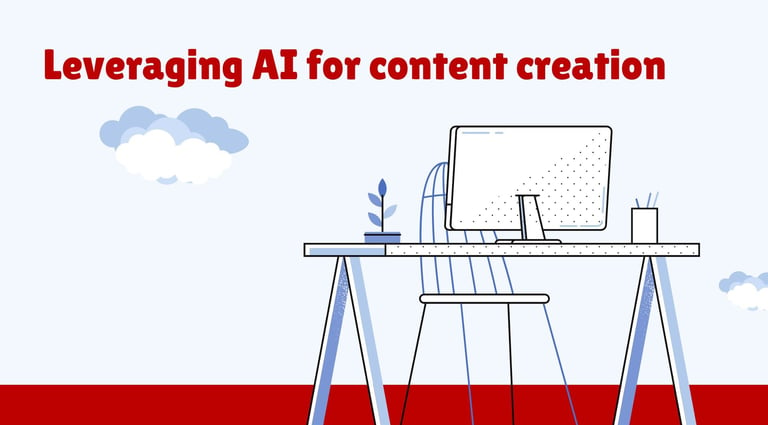

Leveraging AI for Content Creation and Optimization
While AI presents challenges, it also offers powerful tools for content creation and optimization.
The key is to use AI as a complement to human creativity and strategic thinking, not as a replacement.
Here's how AI can be leveraged effectively:
Content ideation: Use AI tools to generate topic ideas and identify trending subjects in your industry.
Data analysis: Employ AI to analyze large datasets and uncover insights that can inform your content strategy.
SEO optimization: Utilize AI-powered tools to optimize your content for search engines, ensuring better visibility.
Personalization: Implement AI algorithms to deliver personalized content experiences based on user behavior and preferences.
Content enhancement: Use AI writing assistants to improve the grammar, style, and readability of your content.
Translation and localization: Leverage AI like verbalate for efficient lip sync translation and cultural adaptation of content for global audiences.
Performance prediction: Employ AI models to predict the potential performance of content before publication.

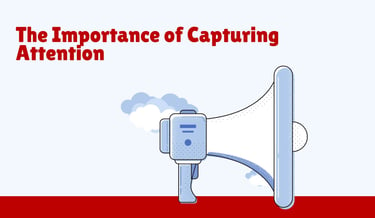
The Importance of Capturing Attention in Today's Digital Marketing Strategy
In an era of diminishing attention spans and information overload, capturing and retaining audience attention has become a critical skill for marketers.
As Kieran Flanagan, CMO of Zapier, aptly puts it, "AI is a BOOM for marketers who love crafting the perfect buyer's journey. And we need to scale attention."
To effectively capture attention:
Create compelling hooks: Develop attention-grabbing headlines, intros, and visuals that immediately pique interest.
Utilize storytelling: Craft narratives that emotionally resonate with your audience, making your content more memorable.
Optimize for skimmability: Use subheadings, bullet points, and visual elements to make content easily digestible.
Leverage multimedia: Incorporate diverse content formats like videos, infographics, and interactive elements to cater to different learning styles.
Focus on value: Ensure every piece of content provides clear, actionable value to the reader.
Timing and context: Deliver content at the right time and in the right context within the customer journey.
Content development in the digital age requires a delicate balance between leveraging AI capabilities and maintaining a human touch.
While AI can significantly enhance efficiency and provide valuable insights, the human element remains crucial in creating truly unique, engaging, and valuable content.
Marketers who can effectively combine AI-powered tools with human creativity and strategic thinking will be best positioned to succeed in the increasingly competitive digital landscape.


River Chan is a marketing director of ToAsia.biz with over 10 years of experience in marketing from strategic planning, project execution, and data analysis across different industries.
About Author
Copyright © 2025 ToAsia.biz


We lead your business to Asia
Our Business Growth Experts help SaaS businesses achieve growth in Asia and become profitable FAST.
Send us a message via WhatsApp
